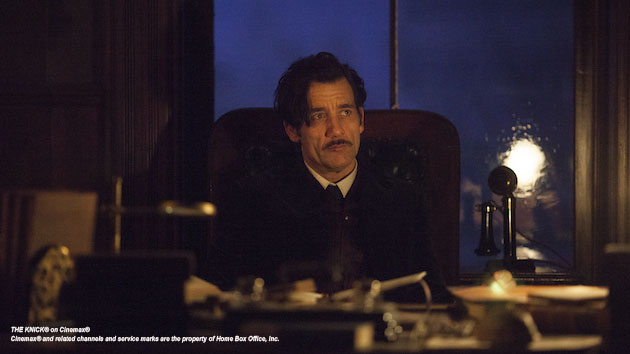Bad Medicine: Cinemax and Steven Soderbergh's The Knick

There have been a lot of hospital shows on television over the years. It is arguably the most durable format on television, and it has provided some of the biggest hits in the history of the medium (ER, Grey’s Anatomy, St. Elsewhere, House, MAS*H, the list goes on). There have been hospital dramas, hospital comedies, hospital romances. I think there was even a hospital musical on UPN at one point.
But there has never been a hospital show like Cinemax’s The Knick.
Set at Knickerbocker Hospital in New York City at the turn of the 20th century, when medicine in general and surgery in particular was largely experimental, The Knick follows the exploits of Dr. John Thackery (Clive Owen), acknowledged surgical pioneer and resident genius. Thackery performs his operations in the truest sense of the word, in a surgical theater that lives up to the name. He begins each procedure with a grandiose speech about how his innovations are a breakthrough for humanity, which might seem a little grandiose until you find out that Thackery’s pre-surgery ritual is shooting cocaine.
The surgery scenes are incredibly gnarly, very realistic, and a little upsetting. I have never been squeamish about onscreen gore, but I found myself squirming all over the place during some of these scenes.
Joining Thackery at the Knick is Dr. Algernon Edwards, freshly returned from studying new procedures in Paris and nearly Thack’s equal, except for the fact that he is African American and it’s 1900; Edwards’ childhood friend and adult lover Cornelia, a socialite whose father owns the Knick, employs Edwards’ parents as servants, and sponsored Edwards’ education; Dr. Everett Gallinger, an inferior surgeon who nonetheless believes himself Edwards’ better on the basis of his race; Tom Cleary, the ambulance driver, and Sister Harriet, who are running an unsanctioned abortion clinic; Herman Barrow, the Knick’s wildly corrupt administrator; and Nurse Lucy Elkins, whose naivete and trusting nature is quickly tested by closer contact with Thackery.
But The Knick’s biggest star is behind the camera: Steven Soderbergh, director of Out of Sight, Ocean’s Eleven, Erin Brockovich, sex, lies, and videotape, Traffic (which earned him a Best Director trophy at the 2000 Oscars) and (my personal favorite) The Informant! directed, shot, and edited all 20 episodes of this show, and his aesthetic shines through every frame; the wide-angle shots, the long takes, the handheld camera style. Soderbergh is perfectly happy to stage entire scenes with no closeups, and the lighting – the hospital moves from gas lighting to electricity midway through the first season – is dim, moody, and gorgeous.
Like the handheld camerawork, the weird, dark synth score by Cliff Martinez should stick out as anachronistic and unsuited to the subject matter, but somehow it’s the cherry on the sundae.
Without getting into spoilers, the second season of the show ended in a way that suggests that there might not be a third, and if that turns out to be the case Soderbergh has pulled off something unprecedented in television: directing the entirety of a show that never flagged in quality and told a complete and satisfying story. And if the show does get a third season, well, I for one will be watching.
All 20 episodes of The Knick are available on-demand for Cinemax subscribers.
